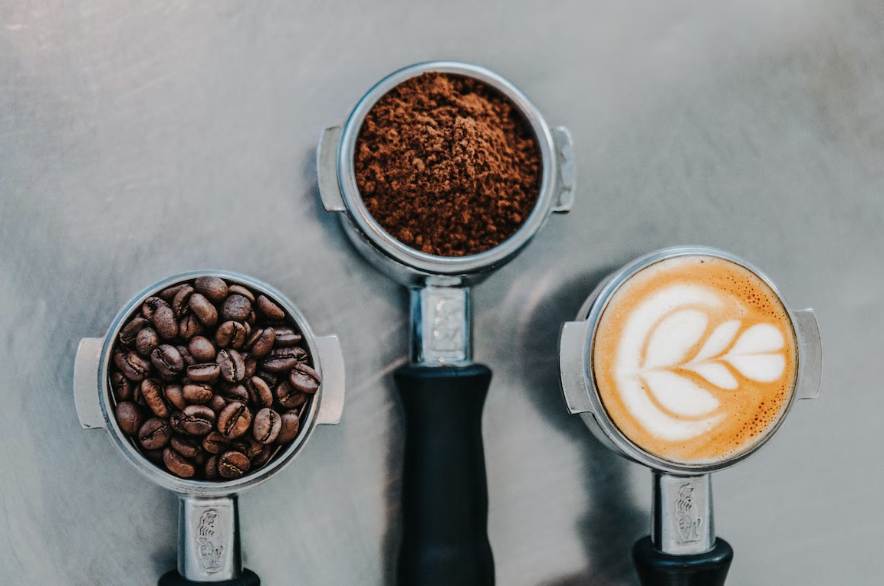For many, coffee is the first thing they think about when they get up in the morning. The taste of that first sip serves as an omen for a great day. Though each person’s coffee order is personal and different, one thing always remains the same: your daily coffee ritual can be made simple and delicious by making it the Italian way. In celebration of International Coffee Day on October 1, keep reading to learn more about the different Italian coffee preparations and traditions.
The history of Italian coffee traditions dates back to the 16th century. During this time, the expansion of the global coffee trade was at its peak, bringing new possibilities for traders in Europe. Specifically, trading ports in Venice were the prime entry point for coffee beans to Europe. Coffee cultura as we know it began, seeing new contraptions invented and shops open for business. Fast forward to today, Italian coffee traditions still remain. Drinking coffee at a bar in Italy and paying for the person after you is still customary, though North America has yet to adopt this, or the price difference when you sit down to enjoy your coffee at the bar.

MAKING THE PERFECT ESPRESSO WITH A CAFFETTIERA
What makes a traditional Italian espresso so special are its origins and steps for preparing it. It all began with a caffettiera, or a moka pot in English. Hailing from Crusinallo, Italy, the caffettiera is a coffee maker invented by Alfonso Bialetti in 1933. After opening a workshop to make his products out of aluminum, Alfonso created the iconic coffee maker. It was named after the city of Mocha in Yemen because it was the location of the oldest port for trading coffee. This machine was revolutionary because it drove the Italian coffee culture forward in Italy, allowing the drink to be produced in the comfort of one’s home. This also granted all Italians, no matter their economic status, the chance to enjoy coffee as part of their daily routine.
The steps for making espresso with a caffettiera at home are simple. Start off by filling the base with water up to the pressure valve. You’ll want to put the filter back in and fill it up with freshly ground coffee beans of your choice. From there, put the chamber back on tightly and wait for the coffee to brew on the stove. Once you hear rumbling, it’s ready to be taken off the burner. Perfetto!
In recent years, the caffettiera has seen a spike in popularity. When the coffee roaster brand Bialetti was going bankrupt a few years ago, a new generation discovered this waste-free method and fell in love with it. Many coffee lovers were in search of finding ways to have delicious coffee in a faster or more practical way. However, they often found that the simplest and oldest ways produced the best results.
COFFEE MAKING ETIQUETTE
In restaurants and cafes, you won’t typically see a caffettiera as the machine for primary serving as it’s only meant for at-home use. Larger establishments stick to commercial coffee machines to serve multiple people in a day and follow practices to use the equipment properly.
You’ll notice that coffee machines have coffee cups placed on the top, as this is the best way to maintain the temperature and keep them dry and warm throughout the day. Cleaning the coffee machine properly will either make or break the experience. Not only are you prolonging the lifespan, but you are also ensuring that the coffee you serve continues to taste fresh. All that you’ll have left to do is choose the size of your coffee, whether you want a corto meaning short, or lungo, meaning long.
ITALIAN COFFEE PREPARATIONS
In Italy, coffee is made simple and without any added flavour or enhancements — in North America, adding toppings is popular and common in coffee shops. Since Italian coffee is so rich in flavour and taste, adding syrups would take away from that and many Italians prefer to drink it as is.
Continue reading to learn about the different types of coffee served in Italy.
CAFFÈ LATTE
If you are in Italy and order yourself a latte, you’ll be in for a surprise when you receive a glass of milk. In various Italian regions, cafes have since adapted their menus to cater to North American tourists by creating their version of a latte. To have the Italian equivalent of what you’re looking for, you’ll want to order a caffè latte, which is an espresso topped with hot milk and often served in a tall tempered glass.
CAPPUCCINO
The cappuccino name came from the word cappuccio, meaning ‘hood’ in English. This would refer to hoods worn by Capuchin monks in the early 1500s. The colour of the drink reminded people of the robes they often wore. This extremely popular drink is essentially an espresso topped with hot foam and milk and served in a ceramic cup. Though many order these during all hours of the day, a cappuccino is supposed to be a morning beverage, whereas espresso is for the night. Many Italians believe that consuming milk after a meal will ruin your digestion. This is why it’s seen as a no-no to order a cappuccino past 11 a.m. in Italy.
MACCHIATO
If you’re looking to add a great touch to your espresso, you should order a macchiato. In Italian, the word macchiato literally means ‘stained.’ This simple yet delicious drink is an espresso with just the right amount of foam on top or steamed milk. It is said that this version of espresso was created to make cafes distinguish themselves from others and attract more customers to try a “new” coffee drink.
AMERICANO
During World War II, many of the American soldiers that were stationed in Italy would often seek solace in cafes. The taste of a traditional Italian espresso was often too strong, so many would add water to emulate the taste and experience of American coffee. Today, this is known as an Americano.
AFFOGATO
In Italian, the word affogato directly translates to “drowned.” This sweet treat is enjoyed as a post-meal dessert combination that is usually served with vanilla or fior di latte gelato drowned with a splash of espresso. The origins of where this emerged have been speculated throughout history. Though much is unknown, what we do know is that it was invented sometime after the espresso machine was invented in the late 1800s.
CAFFÈ CORRETTO
If you grew up in an Italian family, chances are you have experienced your Nonna or Nonno tricking you into tasting this drink. A caffè corretto is an extra strong espresso as it consists of a shot of liquor such as grappa, sambuca or brandy. This kind of drink is typically enjoyed after a meal with dessert as it acts as a digestivo to help stimulate digestion.
BICERIN
Originating in Turin, Italy, this traditional sweet hot drink is made with espresso, drinking chocolate and milk. Dating back to the 1700s, it was invented at the Caffè Confetteria Al Bicerin. Though many would assume this is a dessert, this drink is traditionally consumed for colazione and in a clear glass to see all the layers.
There is no doubt that coffee preparation possibilities are truly endless. Each Italian coffee specialty comes from a place in history and carries on a tradition and legacy. Coffee rituals are ongoing and ever-changing, but the root of each sip, hot or cold, is meant to be enjoyed and passed onto future generations. What is your coffee order?



Add a comment